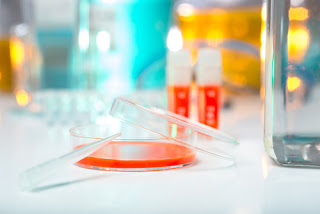Industrial Biotechnology Conference 2022
Opportunities for Spaceflight to Advance Stem Cell Science, Biomanufacturing, and Disease Modeling
The secret to producing large batches of stem cells more efficiently may lie in the near-zero gravity conditions of space. Scientists at Cedars-Sinai report that microgravity has the potential to contribute to life-saving advances on Earth by facilitating the rapid mass production of stem cells.
A paper (“Biomanufacturing in low Earth orbit for regenerative medicine”), led by the Cedars Sinai team and published in Stem Cell Reports, highlights key opportunities discussed during the 2020 Biomanufacturing in Space Symposium, to expand the manufacture of stem cells in space. Attendees at the virtual space symposium in December identified more than 50 potential commercial opportunities for conducting biomanufacturing work in space, according to the Cedars-Sinai paper. The most promising fell into three categories: disease modeling, biofabrication, and stem-cell–derived products. The newly published Stem Cell Reports perspective concludes, “The symposium will initiate a roadmap to a sustainable market for regenerative medicine biomanufacturing in space.”
The Biomanufacturing in Space Symposium was established to serve as the first step in developing a roadmap to a sustainable market for biomanufacturing in low Earth orbit (LEO) space. Biomanufacturing, which uses biological materials such as microbes to produce substances and biomaterials suitable for use in preclinical, clinical, and therapeutic applications, can be more productive in microgravity conditions, the authors noted. “We are finding that spaceflight and microgravity is a desirable place for biomanufacturing because it confers a number of very special properties to biological tissues and biological processes that can help mass produce cells or other products in a way that you wouldn’t be able to do on Earth,” said stem cell biologist Arun Sharma, PhD, research scientist and head of a new research laboratory in the Cedars-Sinai Board of Governors Regenerative Medicine Institute, Smidt Heart Institute and department of biomedical sciences. “The last two decades have seen remarkable advances in regenerative medicine and exponential advancement in space technologies enabling new opportunities to access and commercialize space.”
Of the 50 potential commercial opportunities identified, the most promising fell into three areas; disease modeling, stem cells and stem-cell–derived products, and biofabrication. Disease modeling is an approach used by scientists to study diseases and possible therapeutic approaches, by replicating full-function structures—whether using stem cells, organoids (miniature 3D structures grown from human stem cells that resemble human tissue), or other tissues. Investigators have found that once the body is exposed to low-gravity conditions for extended periods of time, it experiences accelerated bone loss and aging. “… the opportunity to uniquely isolate the stresses induced by sustained microgravity could provide significant insights into the aging process and disease progression,” the investigators wrote in their paper. “Data from associated space-based studies indicate that humans experience significant physiological changes during adaptation to spaceflight and during readaptation upon return to Earth.”




Comments
Post a Comment